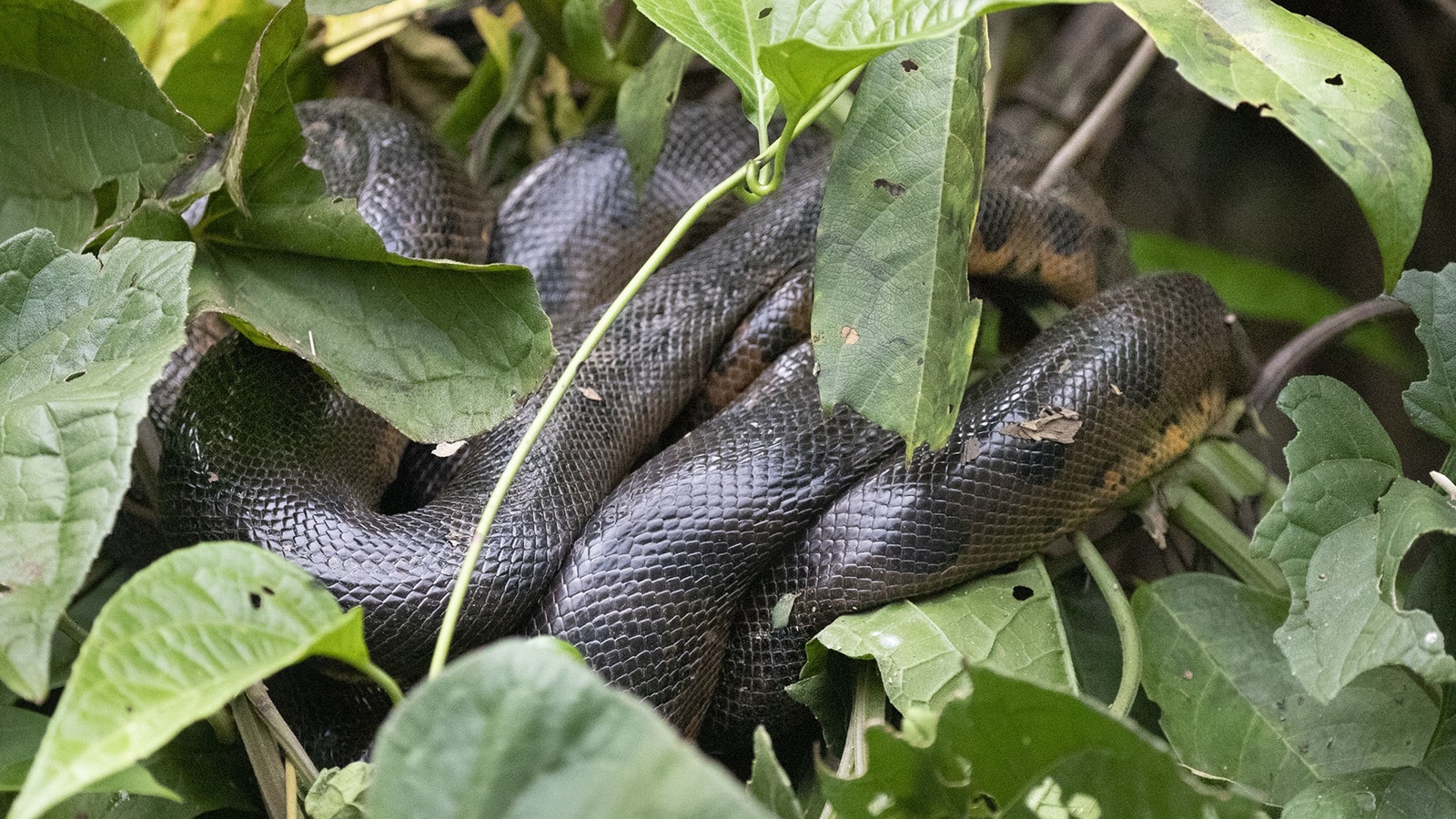In 2024, scientists made a staggering discovery deep in the Amazon rainforest—a previously undocumented species of giant anaconda that shattered all known size records.
Named the Northern Green Anaconda (Eunectes akayima), this reptilian behemoth can grow up to 7.5 meters (24.6 feet) in length and weigh an astonishing 500 kilograms (1,100 pounds). With these dimensions, it is now officially the world’s largest and heaviest snake ever recorded.
Before this discovery, the Green Anaconda (Eunectes murinus) was considered the world’s largest snake, but the Northern Green Anaconda surpasses it in size and mass. For comparison:
- Length: Up to 7.5 meters (24.6 feet) (with confirmed sightings of a 6.3-meter specimen)
- Weight: Estimated to reach 500 kilograms (1,100 pounds)
- Girth: Exceptionally thick, allowing it to swallow large mammals whole
- Bite Force: Extremely powerful, but primarily relies on muscular constriction to subdue prey
 (Source: Wikimedia Commons)
(Source: Wikimedia Commons)
A predator unlike any other
These Amazonian giants are apex predators, capable of taking down deer, capybaras, caimans, and even jaguars. Their hunting technique combines stealth, raw strength, and lightning-fast reflexes. The Northern Green Anaconda lurks in murky waters, waiting patiently before ambushing prey. Once it strikes, it coils around its victim, applying pressure strong enough to stop the heart and crush bones, before swallowing the prey whole.
The Northern Green Anaconda was first encountered in 2024 in the Bameno region of Baihuaeri Waorani Territory, located deep within the Ecuadorian Amazon. Working alongside the indigenous Waorani people, scientists captured and studied several specimens, confirming they belonged to an entirely new species.
The momentous discovery occurred while filming National Geographic’s Disney+ series Pole to Pole with Will Smith. Researchers navigating the Amazon’s intricate waterways reported spotting several of these massive serpents lurking just beneath the surface.
“The size of these magnificent creatures was incredible—one female we encountered measured 6.3 meters (20.7 feet) long,” Dr Bryan Fry, a herpetologist from the University of Queensland, told The Independent at the time. “There are anecdotal reports from the Waorani people of even larger specimens, surpassing 7.5 meters and weighing close to 500 kilograms.”
Story continues below this ad
A 10-million-year evolutionary split
Published in Diversity, the study revealed that the Northern Green Anaconda diverged from its southern counterpart approximately 10 million years ago. DNA analysis found a 5.5% genetic difference between the two species—a striking contrast, given that humans and chimpanzees differ by only about 2%.
This discovery is critical for conservation efforts. Anacondas play a vital role in regulating the populations of their prey and maintaining a balanced ecosystem. Their presence is an indicator of a healthy rainforest with clean water and abundant food sources.
However, threats such as habitat destruction, illegal wildlife trade, and climate change could put this newly discovered species at risk. Scientists now urge for stronger conservation protections to safeguard these giants of the Amazon for future generations.

